I love vegetables! They taste delicious, they’re healthy, and they come in so many fun colors! There are red radishes, orange carrots, green cucumbers, and purple eggplants. Today’s science experiment is going to turn plain, green celery into many other fun colors!
What you need:
- 3 glasses or jars (or more or less depending on how many colors you want)
- Celery stalks with leaves
- Water
- Food coloring
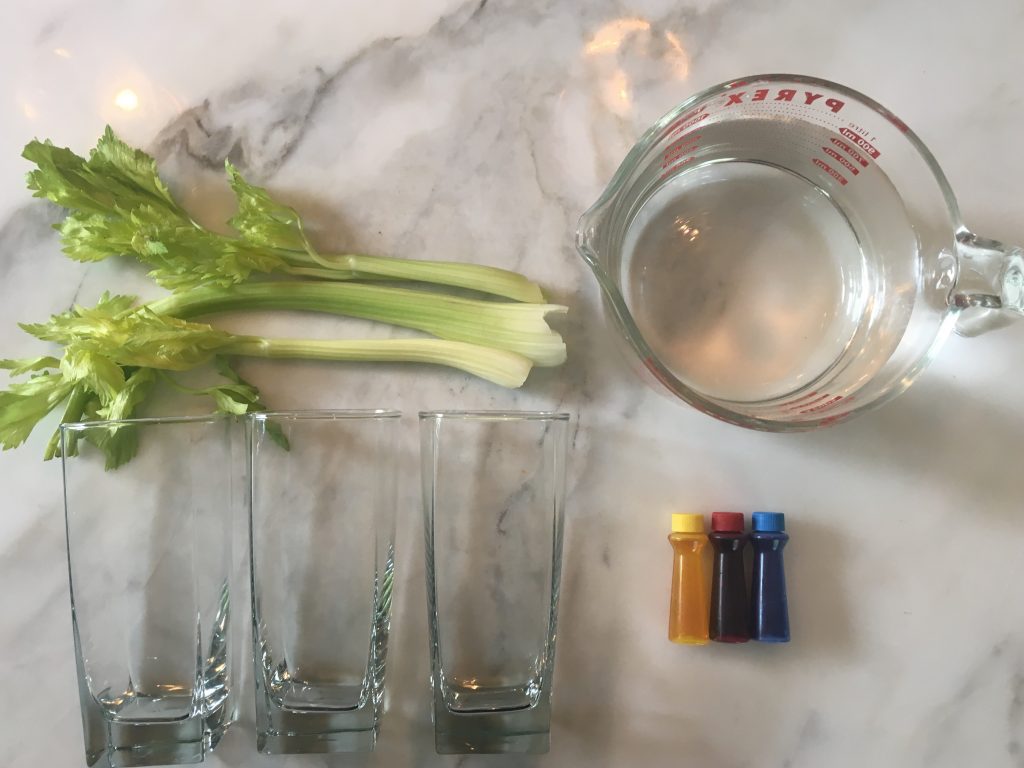
Steps:
- Fill each glass about halfway with water.
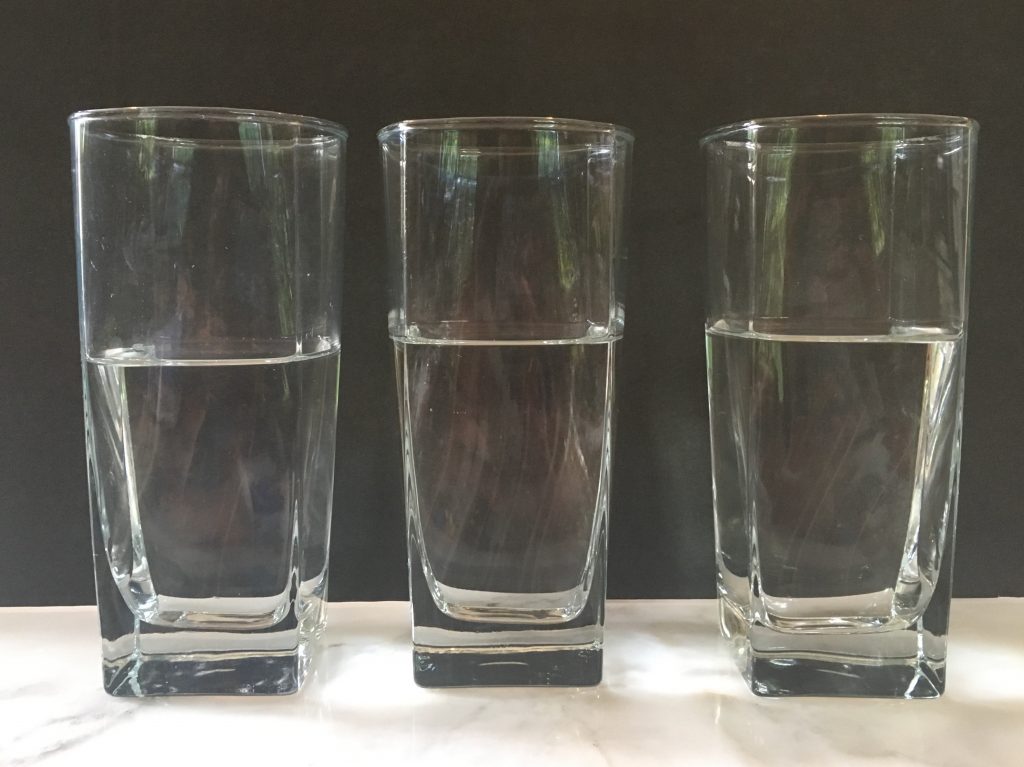
- Add different colors of food coloring to each glass (these will be the colors that the celery turns into). I used blue and red food coloring, and I combined yellow and red food coloring to make orange. I would not suggest using green or yellow food coloring because they will not change the color of the celery significantly.
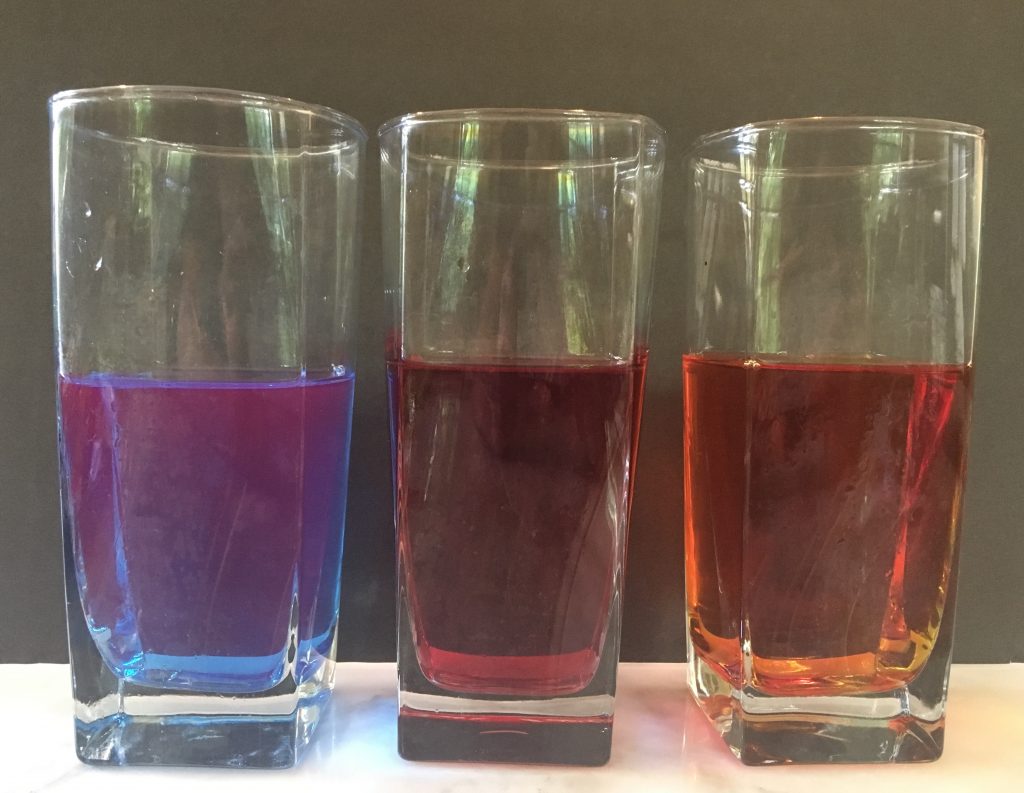
- Cut about 1/2 an inch off the ends of the celery diagonally. This will allow the celery to take up more water.
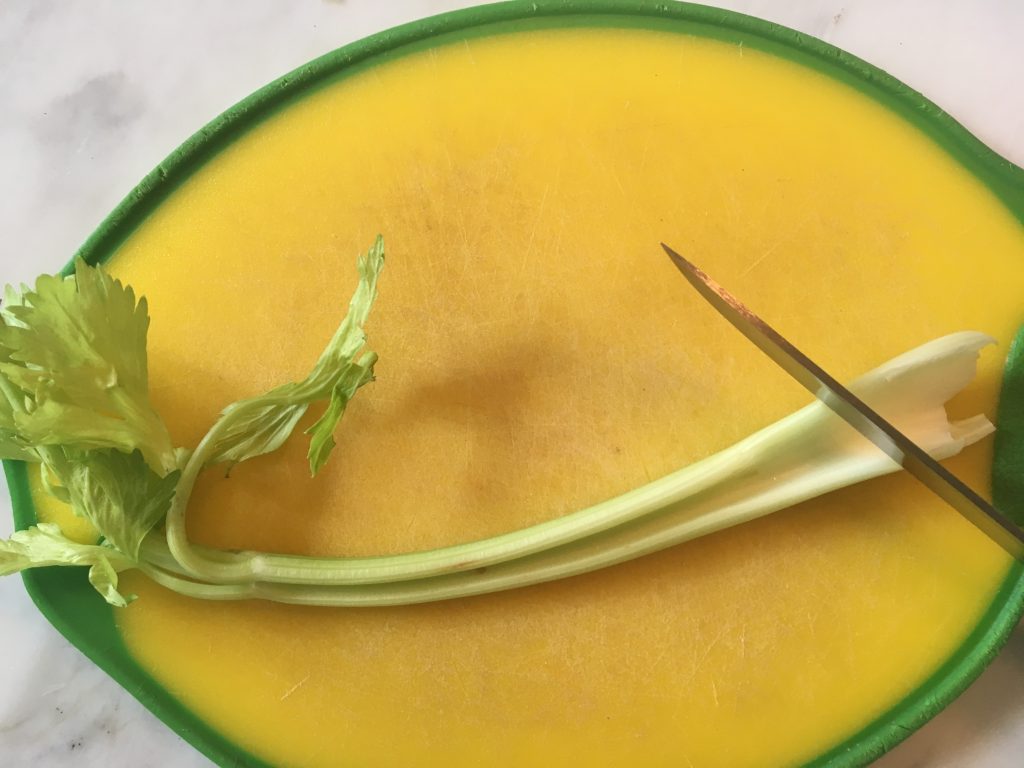
- Place an equal number of celery stalks in each glass. It’s best to use multiple stalks in each glass, but if you only have a few stalks with leaves (like me), using just one per color is fine, too.
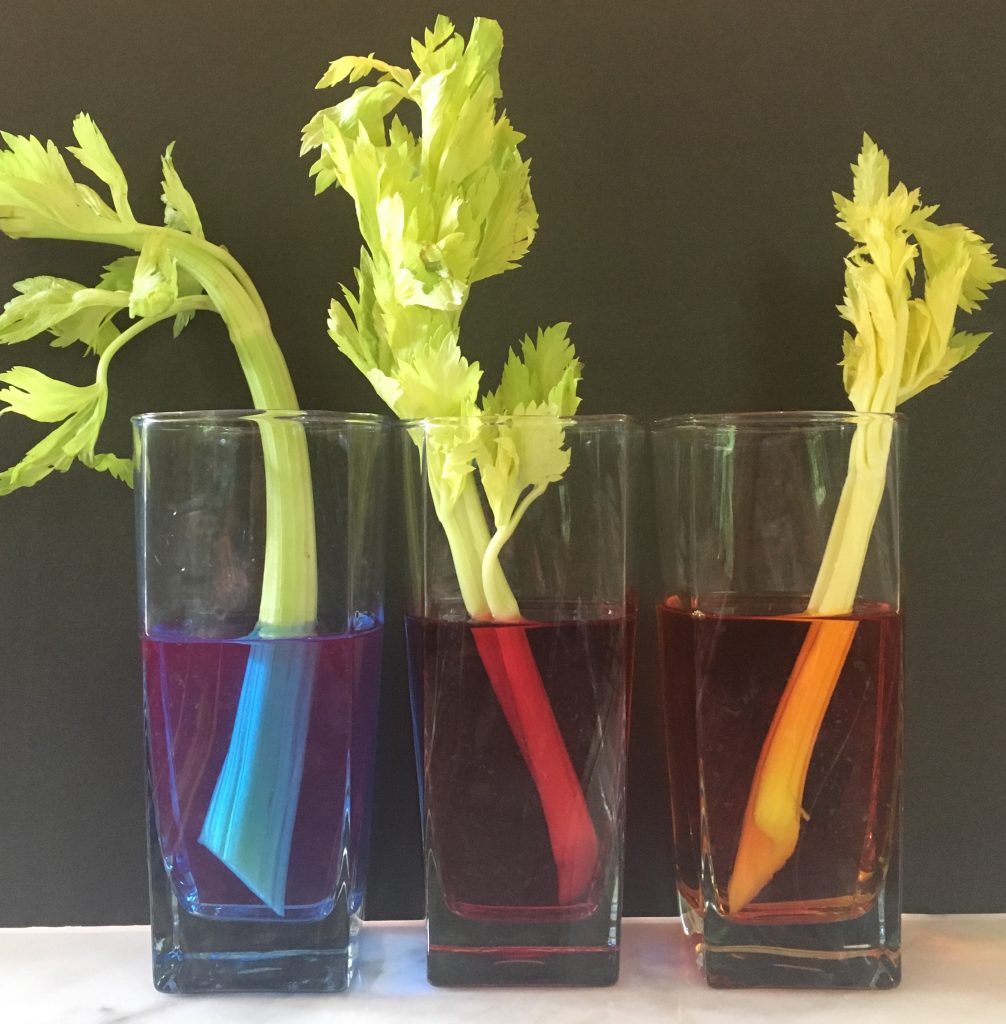
- Watch the celery stalks for 1-2 days as they slowly change color! Our celery stalks in the blue and orange water had gorgeous color changes, but the celery in the red glass did not show much change.
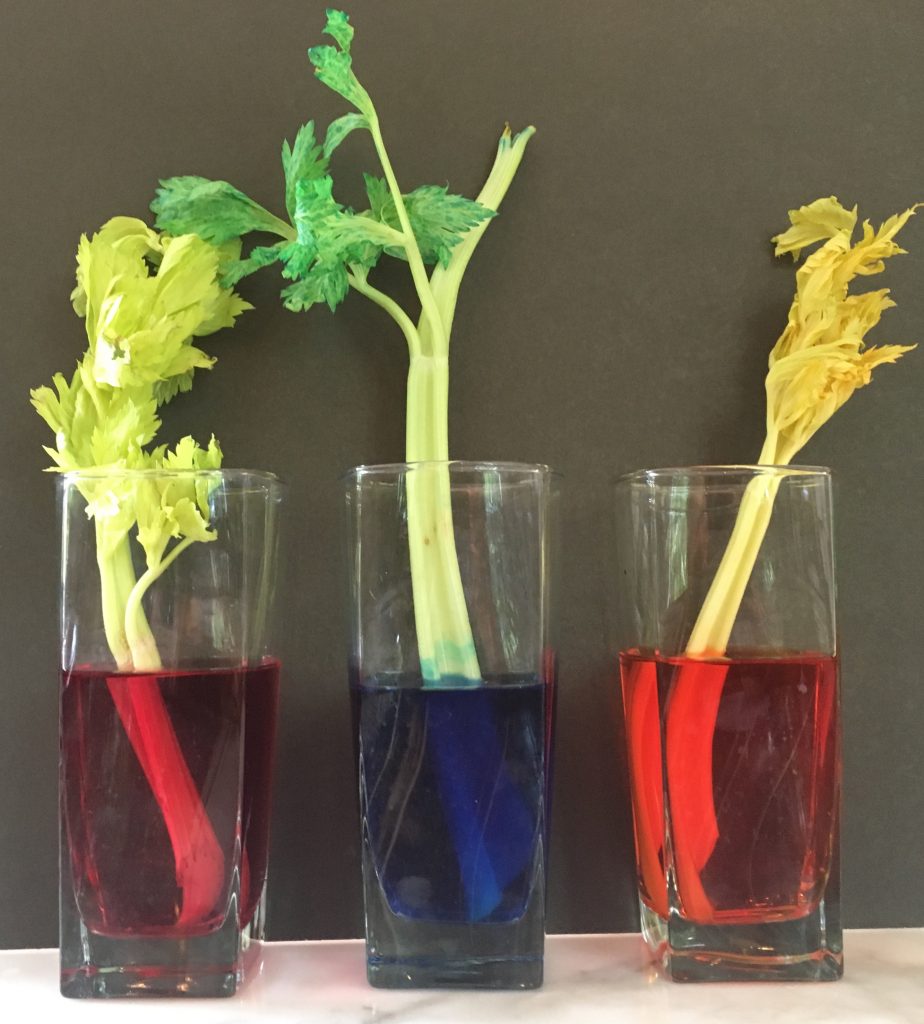
- The veins of the leaves and the tips of the celery are a great place to see the color change.
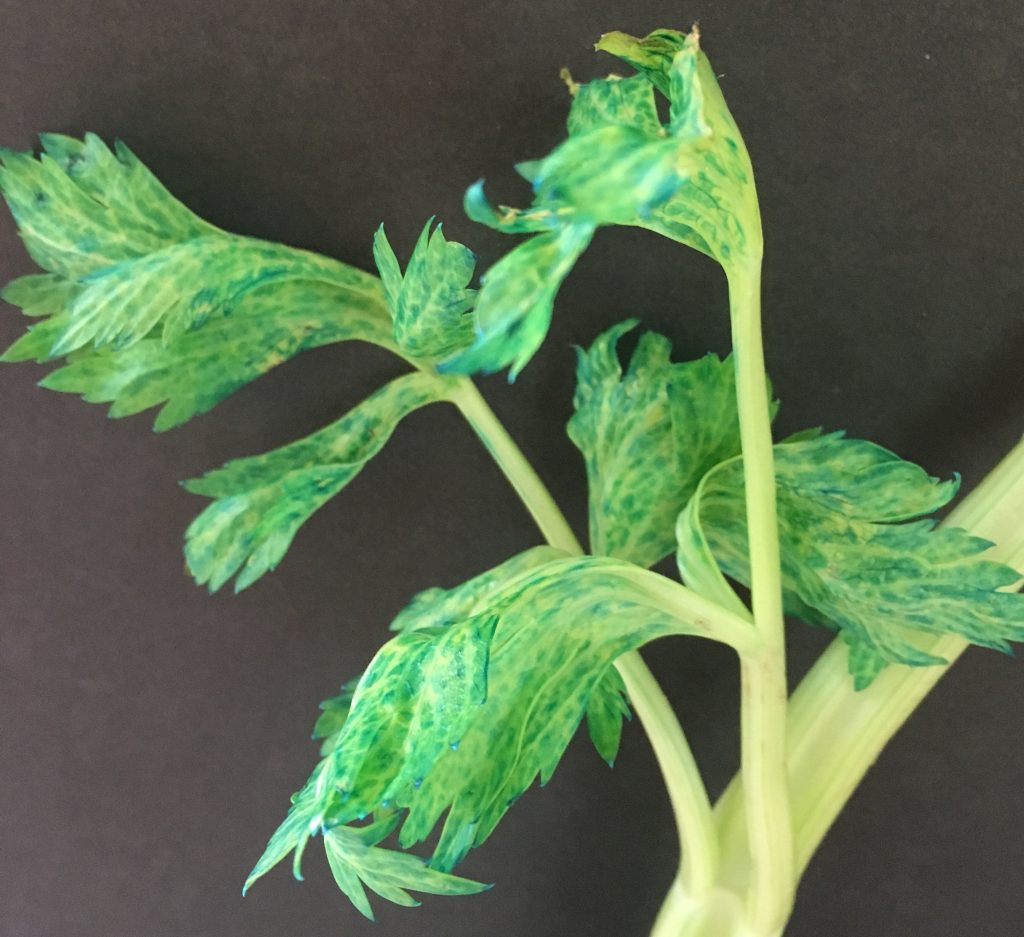
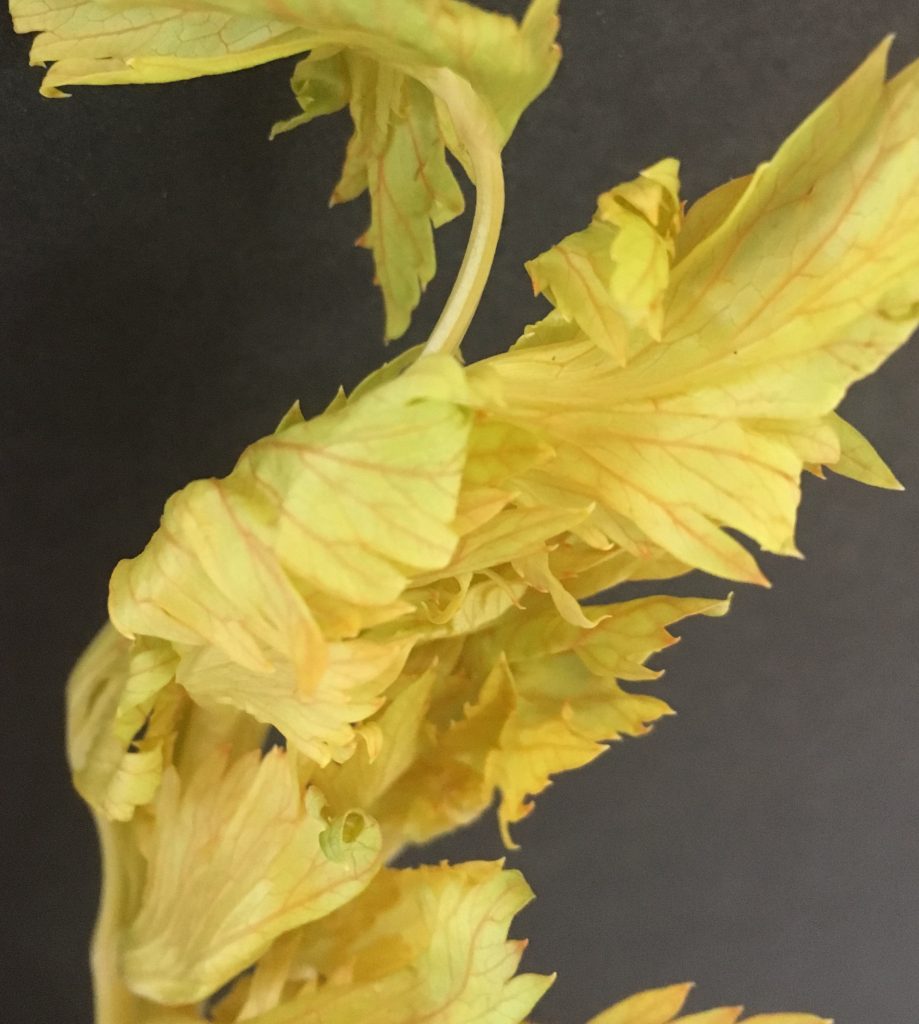
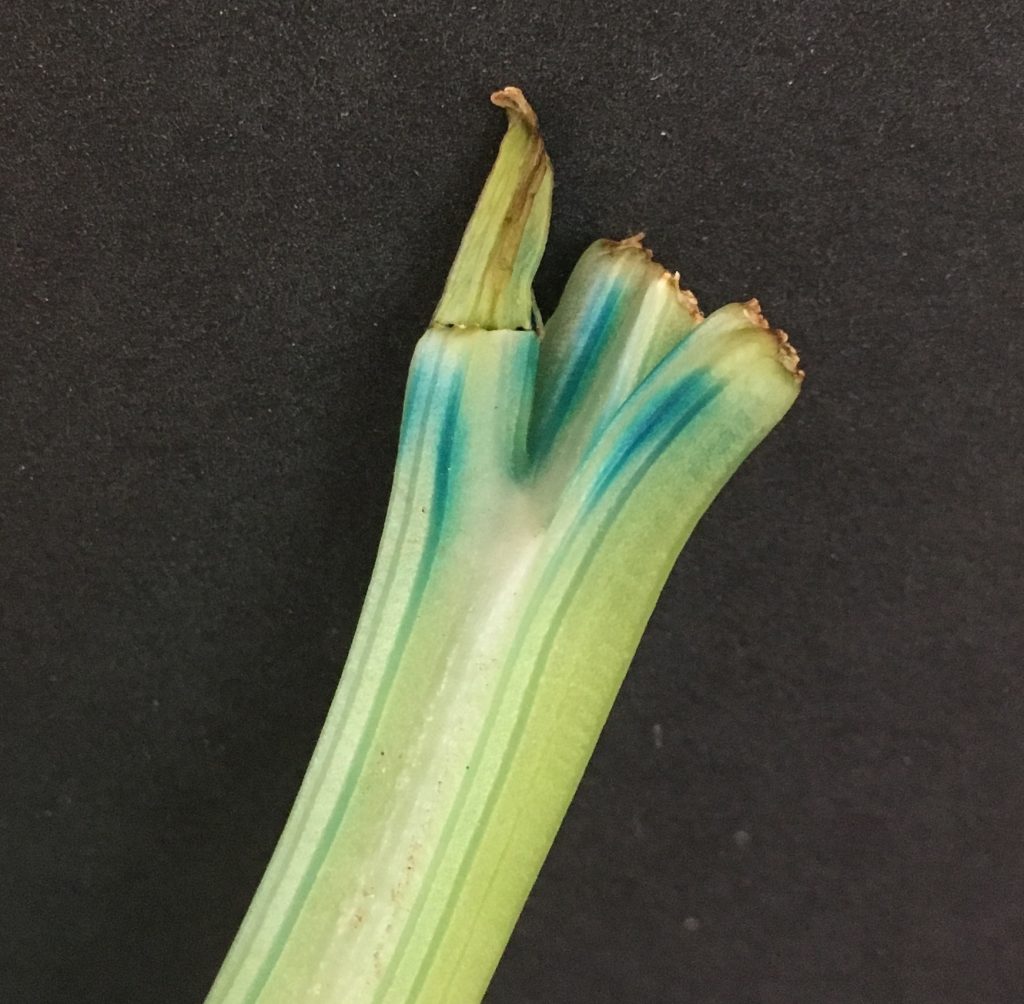
- To see the paths in which the water traveled up the plant, break the celery stalk in half and observe the stringy fibers.
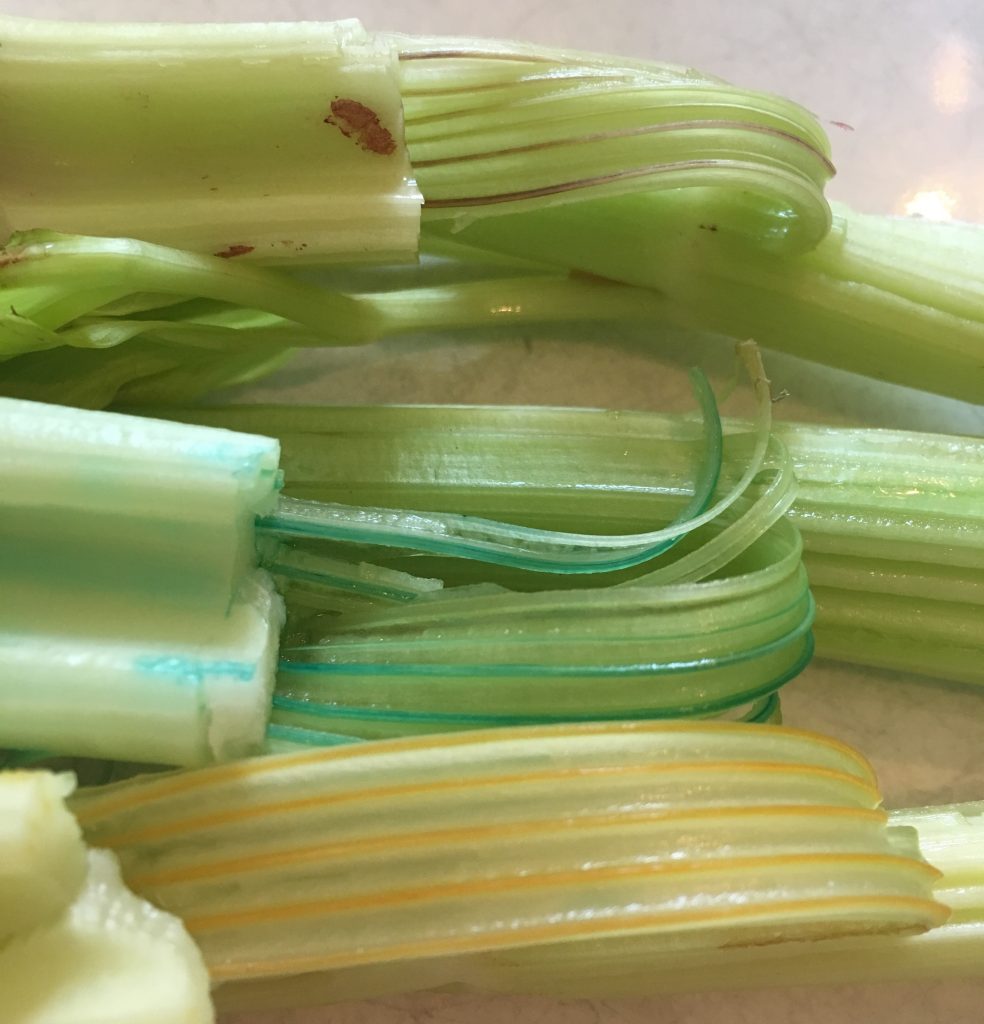
How do the celery stalks change color?
Plants need water to grow and live, just like humans. However, most of the water that plants absorb is from the dirt in the ground. The plant has to have a way to carry the water that is absorbed by its roots up to its branches and leaves, too. Two special properties of water, cohesion and adhesion, help aid this process. Cohesion is the ability of water to stick to other water molecules, and adhesion is the ability of water to stick to other molecules that are not water molecules. Adhesion helps water molecules stick to the inside tissues of a plant and “climb” from the roots to the leaves of a plant. Cohesion helps the water molecules stick to other water molecules and carry them along on the trip up the plant, too! This process of the water traveling throughout the plant is called capillary action. In this experiment, the celery is using capillary action to carry the colored water to its leaves. The colored water is dispersed throughout the plant, and the celery appears to change color.
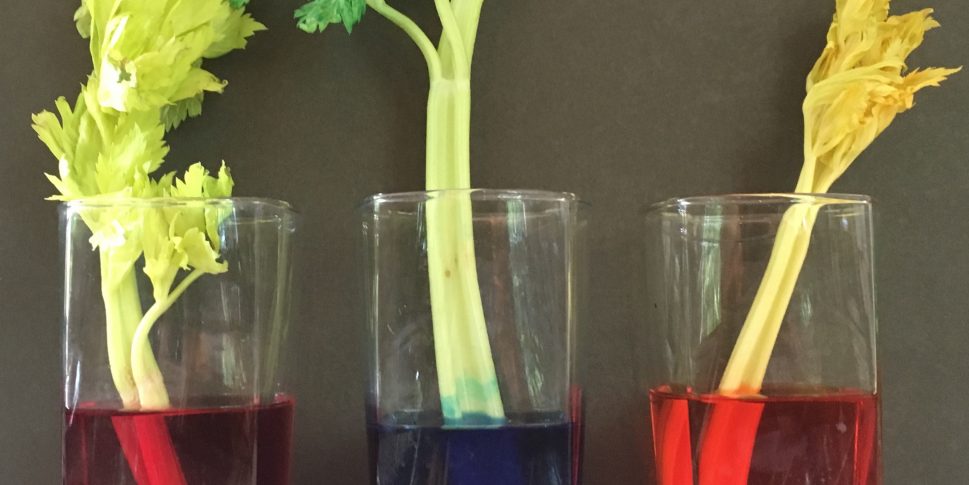
Maisie Escobedo
An excellent post, congratulations !!
Harry
whoah this blog is great i love reading your articles. Keep up the good work! You know, a lot of people are looking around for this info, you can aid them greatly.
Pam
you’ve gotten an incredible weblog here!
Polly
Hi, I just found your blog and I like this post in particular. It’s a classic experiment. I remember when I used to do it in school, and now I can repeat the experiment with my kids! Thanks for sharing.
Hayley
Hello! Someone in my Facebook group shared this site with us so I came to look it over. I’m definitely loving the posts! I’m bookmarking and will be sharing this to my followers! Superb blog and fantastic style and design.
Kayswell
Excellent blog! Do you have any recommendations for aspiring writers? I’m planning to start my own website soon but I’m a little lost on everything. I would love to get your advice! Thanks a lot!